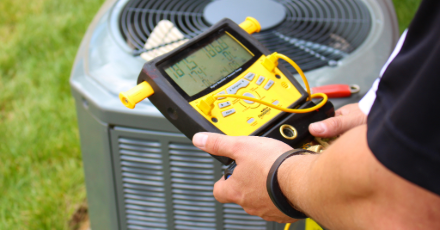The Importance of Streamlining Equipment Diagnostics in HVAC Services
In the world of HVAC services, efficient equipment diagnostics play a crucial role in ensuring optimal performance and customer satisfaction. Timely and accurate identification of equipment issues is essential for HVAC professionals to provide effective solutions and minimize downtime. Streamlining equipment diagnostics not only saves time and resources but also enhances the overall efficiency of HVAC systems.
One of the primary reasons why streamlining equipment diagnostics is important is the complexity of modern HVAC systems. With advancements in technology, HVAC equipment has become more sophisticated, incorporating various components and controls. Identifying the root cause of a problem can be challenging without streamlined diagnostic processes. By streamlining diagnostics, HVAC professionals can quickly pinpoint issues and provide targeted solutions, reducing the time spent on troubleshooting.
Moreover, efficient equipment diagnostics contribute to improved customer satisfaction. HVAC systems are critical for maintaining comfortable indoor environments, and any disruption can cause inconvenience and discomfort. By streamlining diagnostics, HVAC professionals can promptly address equipment issues, minimizing downtime and ensuring that customers can enjoy a comfortable living or working space. This not only enhances customer satisfaction but also helps build a positive reputation for HVAC companies.
Harnessing the Power of AI Vision for Efficient Equipment Diagnostics
Artificial Intelligence (AI) vision technology has emerged as a game-changer in the field of equipment diagnostics. By leveraging AI vision, HVAC professionals can enhance the speed and accuracy of equipment diagnostics, revolutionizing the way they approach troubleshooting. AI vision involves the use of computer algorithms and machine learning to analyze visual data and identify patterns or anomalies.
AI vision technology can be applied to HVAC equipment diagnostics in various ways. For instance, it can be used to analyze real-time video feeds from cameras installed in HVAC systems, allowing professionals to remotely monitor equipment performance and detect any abnormalities. AI algorithms can also analyze historical data to identify recurring issues or patterns that may indicate potential equipment failures. By harnessing the power of AI vision, HVAC professionals can proactively address equipment issues before they escalate, saving time and resources.
How Bay Area HVAC Professionals are Revolutionizing Diagnostics with AI Vision
In the Bay Area, HVAC professionals are at the forefront of leveraging AI vision for equipment diagnostics. Companies like XYZ HVAC have embraced this technology to enhance their diagnostic capabilities and provide superior services to their customers. By integrating AI vision into their operations, these professionals have witnessed significant improvements in efficiency and customer satisfaction.
For example, XYZ HVAC has implemented AI vision technology to remotely monitor their clients’ HVAC systems. With real-time video feeds, their technicians can identify potential issues without physically visiting the site, saving time and reducing travel costs. Additionally, AI algorithms analyze the video data to detect anomalies or patterns that may indicate equipment malfunctions. This proactive approach allows XYZ HVAC to address problems before they become major issues, minimizing downtime for their clients.
Advantages and Benefits of Implementing AI Vision in HVAC Equipment Diagnostics
Implementing AI vision in HVAC equipment diagnostics offers numerous advantages and benefits. Firstly, it significantly reduces the time required for troubleshooting. By automating the analysis of visual data, AI vision technology can quickly identify equipment issues, allowing HVAC professionals to focus on providing solutions rather than spending hours on manual inspections.
Secondly, AI vision enhances the accuracy of diagnostics. Human error is inevitable, but AI algorithms can analyze vast amounts of data with precision, minimizing the risk of misdiagnosis. This ensures that the root cause of a problem is correctly identified, leading to more effective solutions and fewer callbacks.
Furthermore, AI vision enables predictive maintenance. By analyzing historical data and identifying patterns, AI algorithms can predict potential equipment failures, allowing HVAC professionals to take proactive measures. This not only prevents unexpected breakdowns but also extends the lifespan of HVAC systems, saving clients from costly repairs or replacements.
In conclusion, streamlining equipment diagnostics is of utmost importance in the HVAC industry. By harnessing the power of AI vision, Bay Area HVAC professionals are revolutionizing diagnostics, enhancing efficiency, and improving customer satisfaction. The advantages and benefits of implementing AI vision in HVAC equipment diagnostics are undeniable, making it a valuable tool for the industry’s future. As technology continues to advance, it is crucial for HVAC professionals to embrace these innovations to stay ahead in a competitive market.


